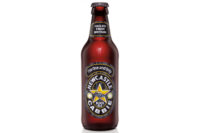How do you imagine the typical brainstorming session goes? There’s probably a boardroom and a long desk, and perhaps there’s a white board, some “brain energy” snacks, and built-in breaks to recharge. Now imagine that brainstorming session is about creating new flavors of beer — a market that is growing in size and sophistication. You might then imagine market research, statistics, analytics and spreadsheets detailing buying trends, drinking habits and revenue per beer style.
While synthesizing data is an important component for any company, especially when trying to capture that crucial age 21+ millennial market (considering that they represent some of the most sophisticated beer drinkers in the country, at 80 million strong, with 20 percent of them updating their Facebook status several times a day), Heineken USA Vice President of Innovation Monique Acevedo believes brainstorming also requires airline tickets and a date to meet local brew masters and bartenders from locales like Texas, Mexico, Scotland, England and Holland. One of the key insights Acevedo and her team understand about creating a product for today’s 21 and older millennial market is that authenticity is paramount — by talking to brew masters, bartenders and beer drinkers around the globe, Heineken USA gets their insights from the field. This hands-on strategy is one of the ways Heineken USA drives growth for a portfolio of strong brands — investing the time and money to talk to people who are steeped in the craft of creating great new flavors.
“One of the things about the beer industry in general is I’d probably not have had my job 10 years ago,” Acevedo says. What was once an industry in which the average beer drinker was loyal to one brand and one type of beer has now exploded into a market where beer lovers enjoy a wider range of flavors and styles of beers than ever before. In order to ascertain what new flavors might appeal to the broadening palates of millennials, Acevedo largely eschews the boardroom in favor of frequent flier miles, visiting breweries across the globe, finding out what local flavors and flavor combinations have become popular organically, and how she might bring that knowledge back home to help Heineken USA create beers for an increasingly sophisticated beer drinking public, as well as bring new beer drinkers into the mix.
“I get to go to Mexico and talk to our brewer there and find out what’s happening locally,” she says. “We do this not only with our Mexican brewery but our Dutch brewery and our Caledonian brewery.”
By talking to the people who know beer best, who make it for a living, and live for it as their beverage of choice, she has created an environment where the research process starts with what people have proven to actually want, rather than what the market might seem to dictate. This approach to creating new flavors comes from what people are already are expressing an appreciation for, and it’s the authenticity of this approach that resonates with consumers who demand that they be listened to rather than marketed at. In this, she aims to be the first to bring these flavors back to the states, at scale.
When asked whether there are any hard and fast rules to the innovation process, Acevedo answers by way of fond memory — a beer-making session she had with one of Heineken’s master brewers in Holland. As she was being schooled on the finer points of brewing, she asked him whether, because hops are technically flowers, they could try brewing a beer with Holland’s signature variety: the tulip. “We ended up brewing tulip beer,” she says. “It was actually pretty good, but the tulips do not stand up to the brewing process, so you didn’t really taste them … There’s a lot of failures in innovation, but the things you take away from it are the Eureka moments.
“All ideas are tested with consumers,” Acevedo continues. “The product, the packaging, the language — and of course, not all are successful.” It’s not enough that a consumer like the beer; they have to have “purchase interest,” the willingness to spend their hard-earned money on it. Once that is proven, a business case must be built to answer pressing questions: How many consumers would buy it? How often? Who exactly is the target for this?
Let the people tell you what they want. Sometimes, they go ahead and make it for you. This was the case with the Dos-a-Rita, a drink that emerged from a hotbed of beer cocktail innovation: Texas. “This innovation on our fastest-growing brand, Dos Equis, comes from a very authentic behavior that was created first in the on-premise,” Acevedo says. “A bar in San Antonio pioneered this drink, making a Margarita and topping it off with a Dos Equis. For me, being able to take something that’s inspired by real people and put that in a bottle or can — that’s sort of reinventing beer.”
Another example is the Amstel Radler. German for “bike,” Radler is traditionally a 60/40 mix of beer and lemon juice. Acevedo and her team noted that it was created quite organically as a refreshing alternative to a full beer after Europeans wanted something lighter after a long bike ride. Lemon juice and beer is by no means a predictable creation, but there’s no substitute for genuine human behavior.
Finding inspiration from what locals are doing, whether they’re creating a hybrid refreshment drink for after a bike ride or a counterintuitive concoction made by bartenders in Texas, Acevedo trusts the wisdom of the public’s palate. What begins as a local trend can become a national hit.
This article was contributed by Heineken USA, White Plains, N.Y., www.heinekenusa.com.
Bringing new beer ideas to fruition
Monique Acevedo, vice president of innovation for Heineken USA, discusses her new product development process



